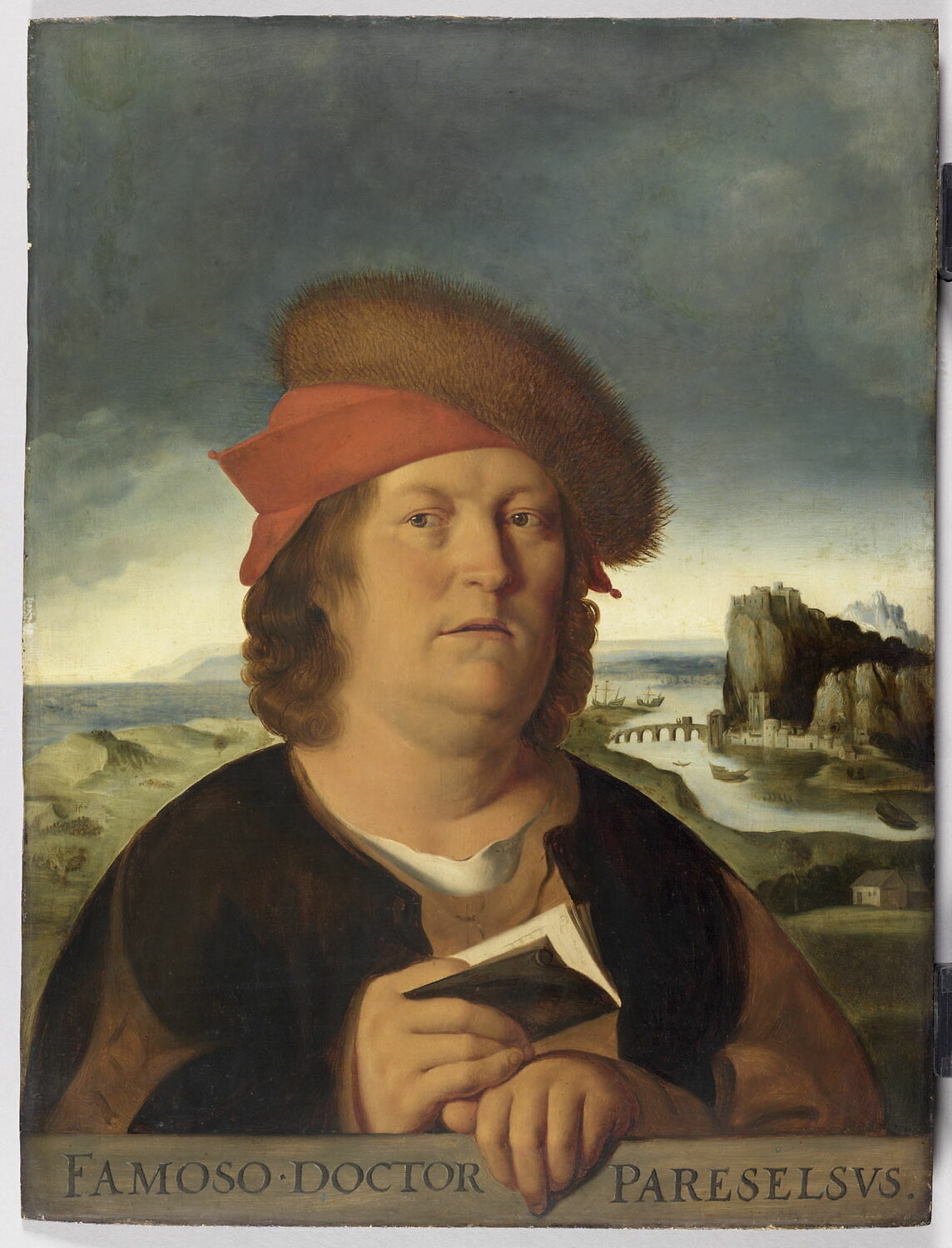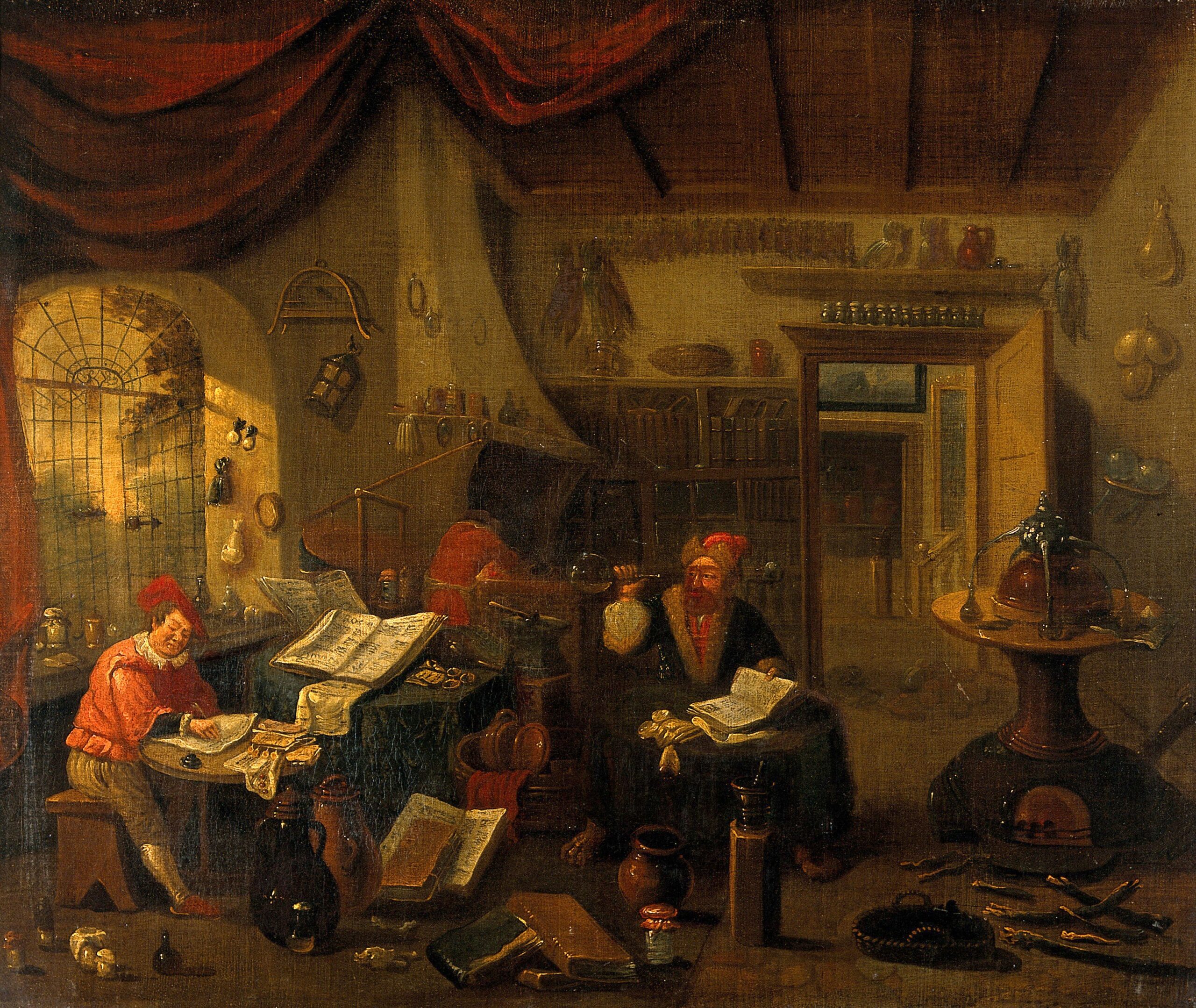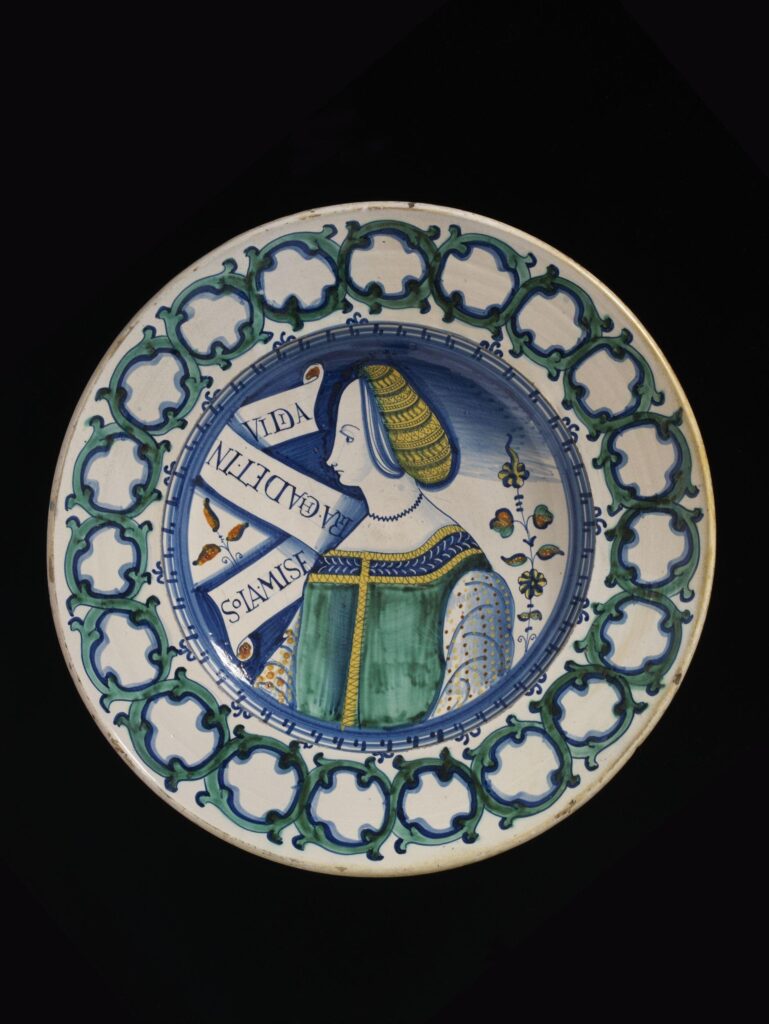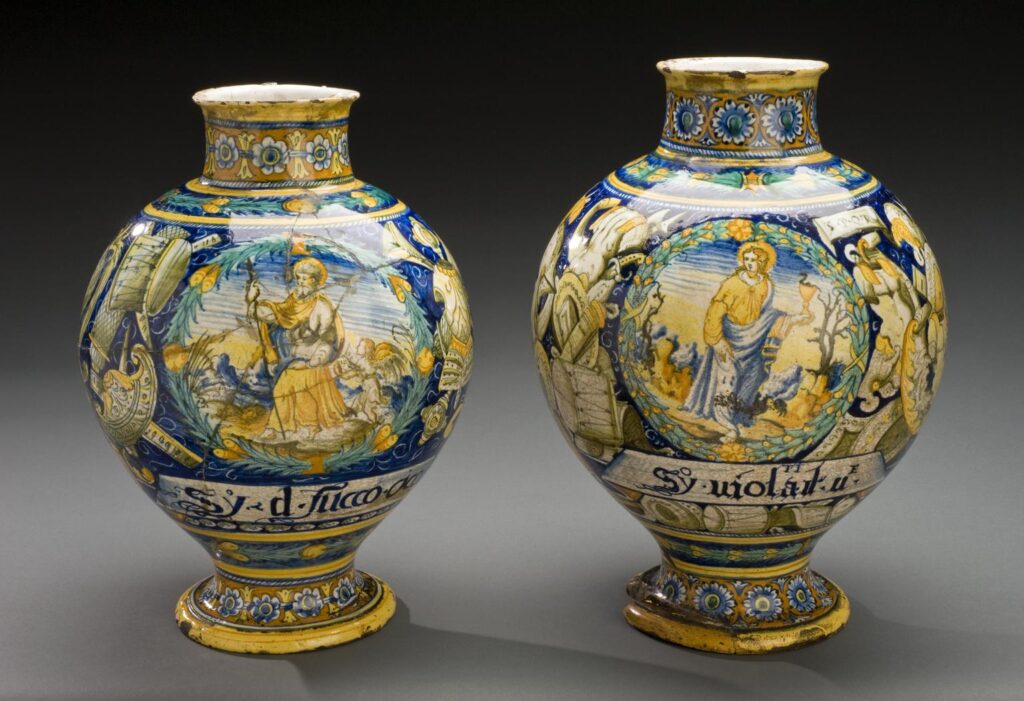It is common to find scrolls with inscriptions on Renaissance ceramics, In most cases, the scrolls conveys simple information such as names, contents or more sophisticated messages like mottos.
In the above examples, the letters on the scrolls are coherent and can be clearly identified. However, this is not the case with our pharmacy jar. The inscription is fragmented and partially damaged, which only allows us to extract the Latin letters as part of the complete message: MEN…A …IN/RE/BUS/O/PT/I/MA/…LUS/DIV… Dr Elisa Sani, Research Fellow at the Courtauld, and author of the complete catalogue of The Courtauld’s maiolica collection, has suggested a possible reading of the inscription as: Mensura in rebus omnibus optima multo plus divinis, meaning “moderation is best in all things, but divine ones”.
Here, the word divine indicates a religious context. Interestingly, divinity is also found in what the German pathologist and medical historian Walter Pagel (1898-1983) suggested as the “religious motives of medical biology” in the 16th century. The understanding of divine creation underpinned the process of acquiring knowledge, for to study nature was to search for God. While religion and science may have often appeared to contradict each other throughout human history, scholars like Pagel pointed out that the boundaries of the two entities were often blurred.
The discipline of alchemy branched from this early version of science, which can more accurately be called natural philosophy. The concept of moderation, referred to in the scroll, can also be understood in relation to philosophical ideas about science. A significant figure in this context is the Swiss alchemist and physician (doctor) Paracelsus (1493-1591), known for his, at that time, novel approach to understanding and practising medicine.

Following the religious concept where mind and matter are eventually one and the same, Paracelsus’s principle further emphasised achieving and maintaining the balance of such a unity. As an alchemist, his research into well–being and prolonging lives was mostly associated with poisonous substances (like mercury). However, he attempted to destabilise the concept of poison: “What is there that is not poison? All things are poison and nothing is without poison. Solely the dose determines that a thing is not a poison.”

The last sentence suggests that his experience in early medical chemistry could have involved dose moderation to result in different effects, some of which could be toxic or even lethal. Based on this reading of the theory and practice of medicine in the Renaissance, we might imagine the inscription to function as a note of advice or instruction on the proper use of the jar’s ingredient in a remedy. It could also be a warning against overdose, even if adverse consequences were not specified.
Paracelsus’s theory paved the way for modern toxicology and pharmacology. Moderating dosage is critical to improving drug efficacy and specificity while ensuring patients’ safety. When exceeding a certain threshold, a drug with a therapeutic effect could become toxic. Some medications, especially those that require long-term treatment, will have a dosing adjustment schedule where patients can gradually increase the amount or frequency of administration. Meanwhile, individuals can sometimes respond to the same drug under the same dose very differently, meaning that some therapies will need to establish a personalised dosing regimen with even more flexible moderation and precision.
Even beyond all the possible readings and contexts, the inscription on this pharmacy jar appeals to us almost like a word puzzle, leading us to imagine how these letters can be reconstituted and interpreted.



